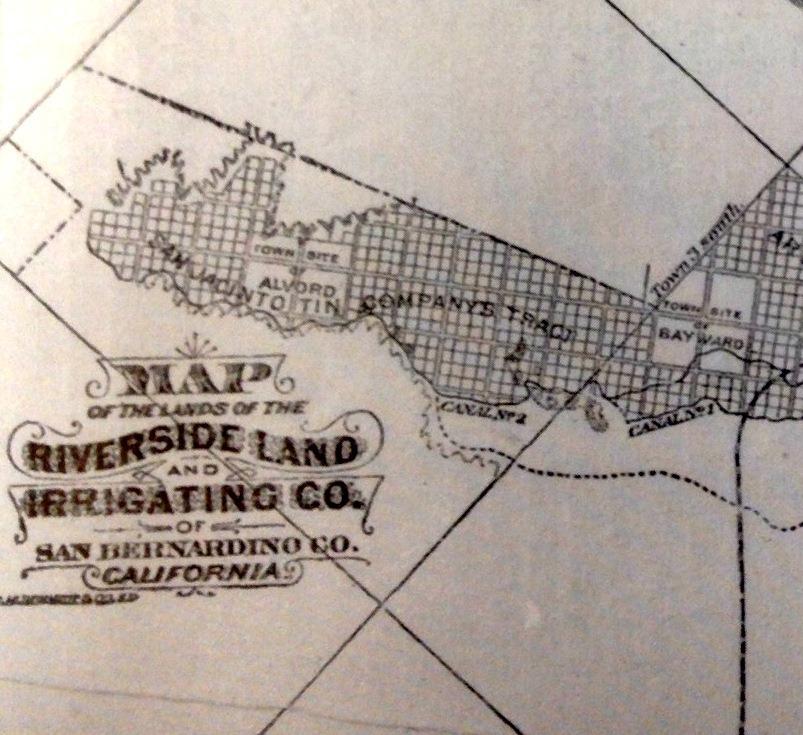- Alvord High School
- School History
- Townsite of Alvord
School Information
Page Navigation
-
Townsite of Alvord
Townsite of Alvord
In 1876, the townsite of Alvord was born taking in both sides of Magnolia Avenue between Johnson and Buchanan Streets. The name never stuck to a town and the townsite itself was moved twice but never developed. Eventually, it was considered part of what is now the La Sierra area of Riverside. The original site was named by its owner, S. C. Evans, president of the Riverside Land and Irrigating Company in honor of William Alvord, who was involved in financing Evans’ company. The Bank of California served as treasurer for an Evans lending institution in downtown Riverside. Samuel Cary Evans, Jr., went on to become Riverside’s first mayor in 1909.

Townsite of Alvord Becomes La Sierra
In 1883, the townsite of Alvord area was within Riverside city limits. In late 1892, the site of Alvord was changed to where the main line of the Riverside, Santa Ana and the Los Angeles Railway (now Santa Fe ) roadbed crossed Magnolia Avenue from Corona into Riverside . The Alvord rail extension opened in August 1893 with mule drawn cars being used to transport people from the Alvord Railway Tower, down the middle of Magnolia Avenue to Van Buren Street . The “Alvord Tower” watched over the transition from Corona into Riverside and had large platforms for shipping the abundant amount of Riverside produce. In 1899, pepper trees were planted down the center of Magnolia from Tyler to Temescal Wash with palm trees planted along the avenues, to both beautify the area and encourage development. However, Alvord never developed as a town.
The citizens voted the townsite out of the city in 1908 primarily because it could not be included in domestic water and other municipal services. In 1964, it was later annexed back into the city, by vote, and became known as La Sierra.

